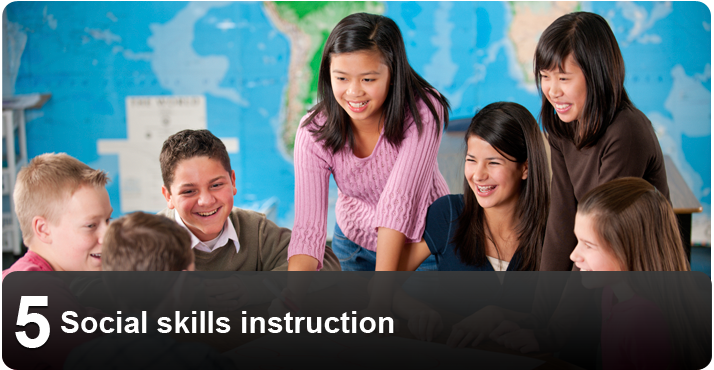“We shouldn’t surprise students. Setting clear boundaries for acceptable and unacceptable behaviour gives students a feeling of control and predictability. Students need to know what is expected.”
– Barb James
Negative behaviour is often the result of a skill deficit and is not a motivational issue. Positive reinforcement and negative consequences motivate students only when they know the desired behaviour and are capable of displaying it.
Some students can readily verbalize what they are supposed to do but their actions do not correspond with their statements. Just as people who are learning to drive a vehicle with a standard shift can often verbalize what they are supposed to do but cannot physically perform the action of shifting gears, many students require instruction and practice before they can adopt appropriate replacement behaviours.
Teaching students to manage their emotions and act appropriately and responsibly is much like teaching academic skills. Students with behaviour disabilities generally require direct and intentional teaching of targeted social skills. They have missed out on learning social skills that come naturally and incidentally for most students, and they have not learned how to self-regulate their emotions.
BEHAVE strategy
The BEHAVE strategy provides a framework for planning instruction of social skills.9
B = Identify the target replacement Behaviour or social concern
- Collect data to assess social competency challenges
- Select specific skill to be taught
- State the skill objective in positive terms
- Clarify what the student needs to know, do and say in observable, measurable terms
E = Explain the Expectations
- List the step-by-step skill sequence required
- Consider communication, social and functional skill level of student
- Communicate these behavioural expectations to staff and the student
- Select the setting and context in which this skill is best taught—individually, small group, large group, school or community
H = Have clear models
- Model the specific social skill and use clear language to describe each step
- Use respectful and competent peers as models
A = Act it out consistently and frequently
- Use guided practice to learn and rehearse new skills
- Use verbal and visual prompting to support the demonstration of the new skills
- Create multiple opportunities to practise and master skills
- Reinforce appropriate imitation of models
V = View and Value the social skill often
- Ensure the new social skill is more reinforcing than the inappropriate behaviour it is replacing
- Specify how students will be reinforced and supported throughout the learning
- Teach students to monitor their own behaviour and, if possible, self-reinforce themselves when they demonstrate the positive behaviour successfully
- Provide consistent reinforcement initially, then fade
E = Expand and Extend the skill
- Communicate learning to others and expect the learning will be demonstrated elsewhere
- Work collaboratively with parents and others across as many settings as possible
Teach emotional regulation
Some students are very quick to anger and act out verbally or physically. Other students become very anxious and engage in negative behaviours to avoid or reduce anxiety. Individuals who are depressed can react to specific situations in different ways, including self-abuse, withdrawal or acting out.
Students who find it difficult to control their emotions benefit from having an alternative strategy to use when they are beginning to get upset. Conventional verbal cues such as “stay calm” and “relax” may be insufficient. Students with these difficulties need help to recognize the trigger event and then deal with it by means of a physical activity such as visualization or intentional breathing.
Turtle visualization strategy
Use the turtle visualization strategy to help students replace behaviours such as withdrawal or acting out.
Turtle Strategy
- Talk about a turtle. For example:
- has strengths (it may be slow but it
can still win the race with the rabbit)
- is hard on the outside but soft
on the inside
- can go into its shell for a short time when upset and emerge
feeling better
- Demonstrate the “Do turtle” technique.
- Fold hands together,
fingers intertwined with thumbs sticking out.
- Cool down by slowly blowing
on each of the four legs and the head.
- Practise
the “Do turtle” technique.
- Role-play when the student is feeling
calm.
- Next try role-playing after a planned trigger event.
- Cue and practise when the student is upset after a trigger event.
Body breathing
While standing, students visualize breathing in through the soles of their feet, drawing the breath all the way up through the body and exhaling through their hands. Repeat this deep breathing exercise several times.
This strategy allows students to deep breathe without hyperventilating. In order to breathe out through their hands, students must open their clenched fists, which helps them relax.




